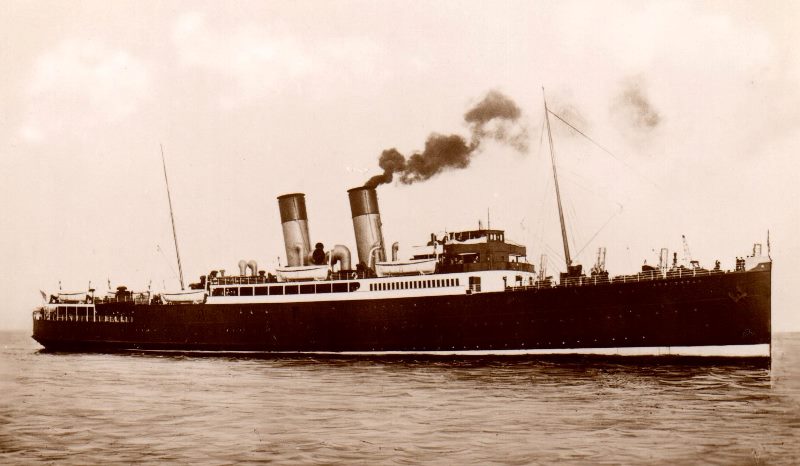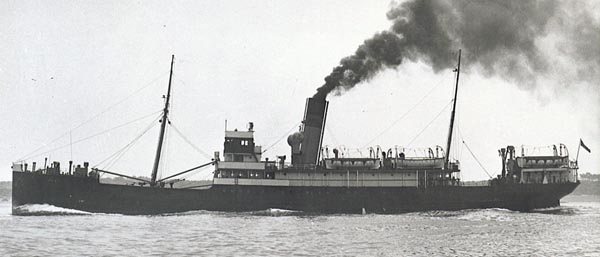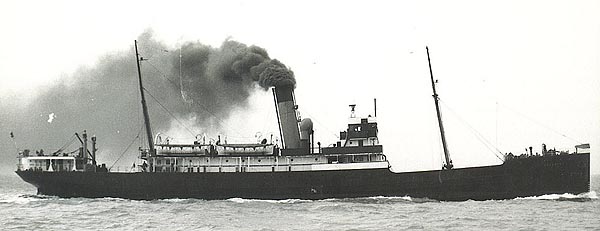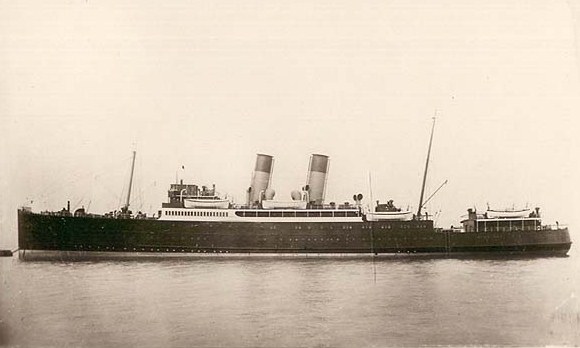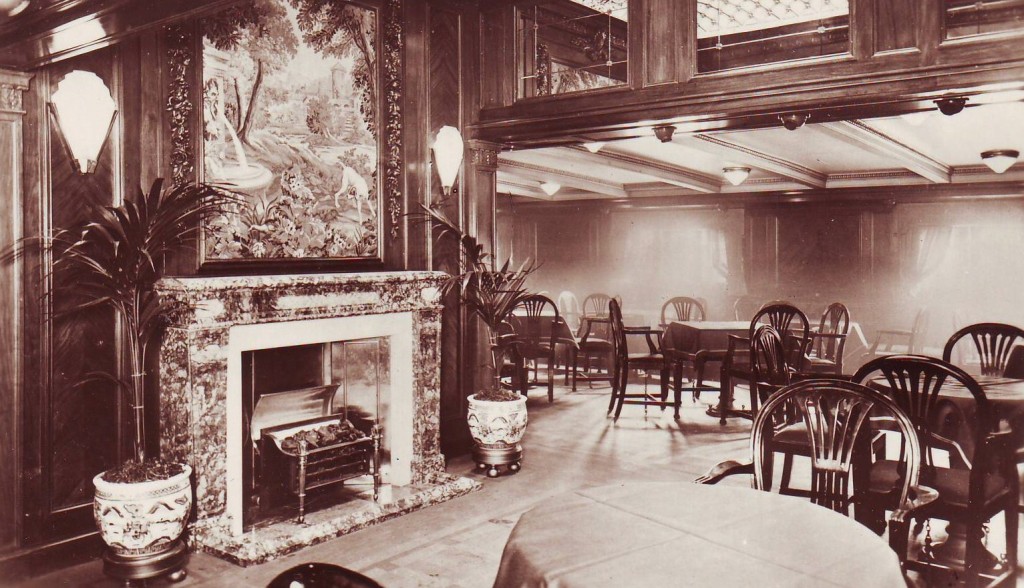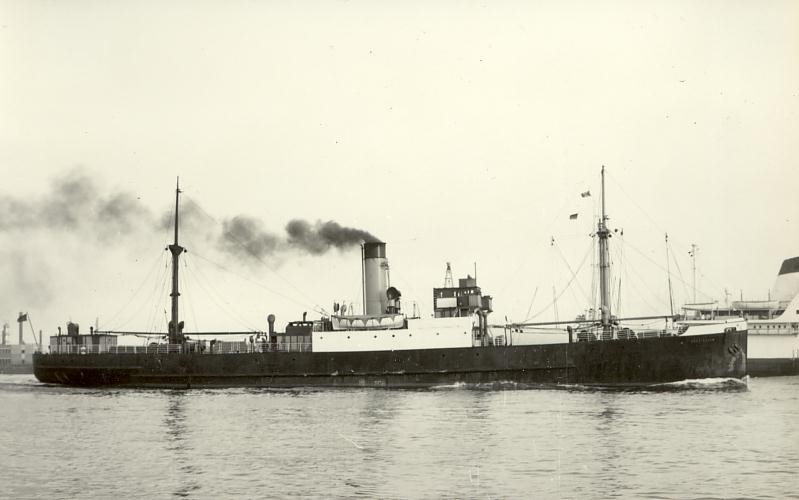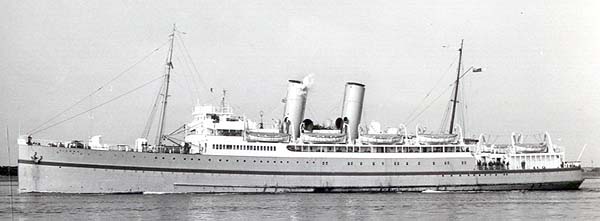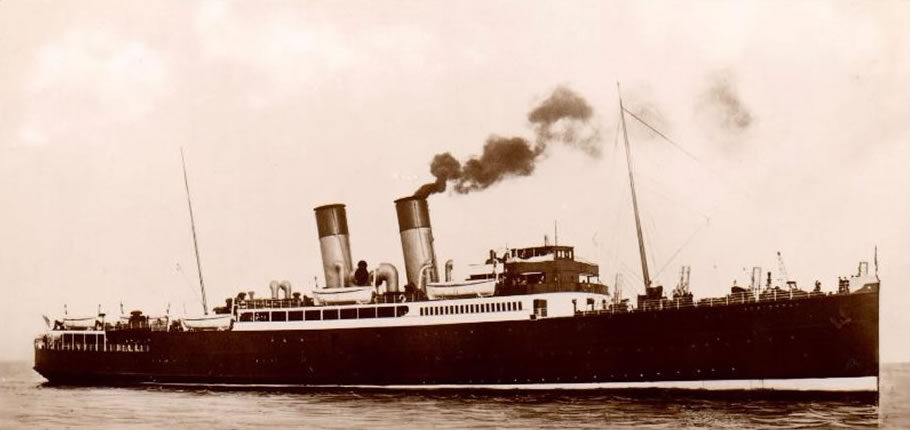
London North Eastern Railway
The London and North Eastern Railway (LNER) was the second largest of the “Big Four” railway companies created by the Railways Act 1921 in Britain. It existed from 1 January 1923 until nationalisation on 1 January 1948, when it was divided into the new British Railways’ Eastern Region, North Eastern Region and partially the Scottish Region.
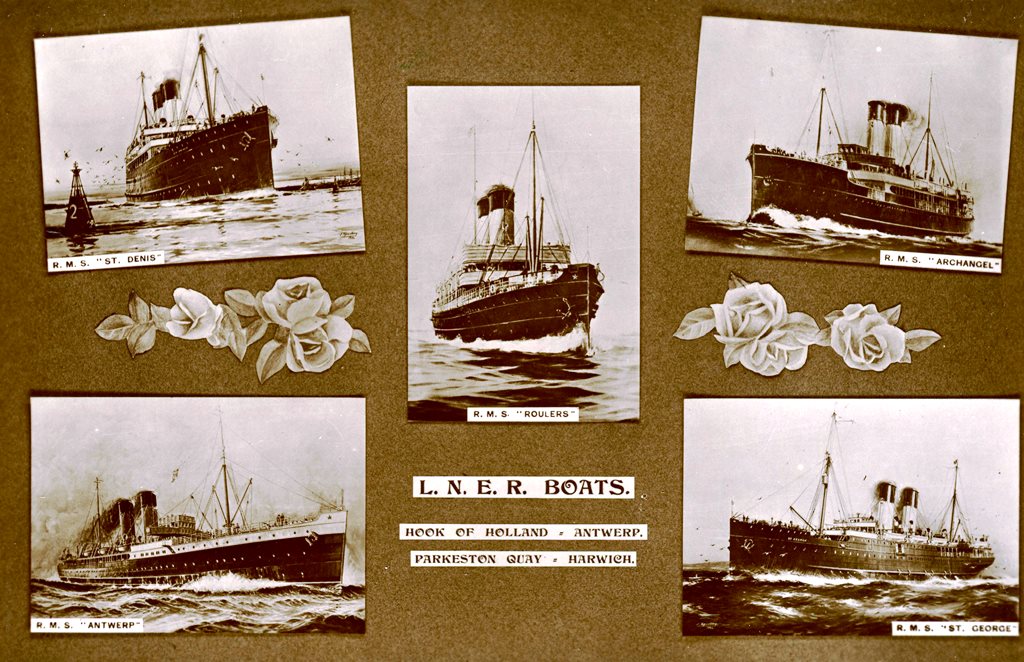
L.N.E.R.
The company was nationalised in 1948 along with the rest of the railway companies of Great Britain. It continued to exist as a legal entity for nearly two more years, being formally wound up on 23 December 1949. On the privatisation of BR in 1996, the franchise to run long distance express trains on the East Coast Main Line was won by Sea Containers Ltd, who named the new operating company Great North Eastern Railway (GNER), a name and initials deliberately chosen to echo the LNER.
Accrington
- Built. 1910 (IMO 1127863)
- Yard. Earle’s Shipbuilding, Hull
- Class of Ship. Passenger
- Operator. LNER/GCR
- Route. Harwich – Rotterdam/Antwerp
- Length. 265 ft.
- Gross Tonnage. 1680
- Passengers. 410
- Speed. 13 Knots
- Status. Scrapped 03/05/1951

Accrington
S.S. Accrington was one of five sister ships built for the old Great Central Railway. requisitioned in 1915, Accrington became a P.O.W. accommodation ship, then in 1940 on English Channel services. In 1917-1918 she was a Training Ship based at Portsmouth. Post-war she was briefly chartered for GER’s Rotterdam to Harwich repatriation service before taking up the Grimsby – Hamburg route.
Acquired by LNER in 1923 and passed to Associated Humber Lines in 1934. From July 1942 used as a convoy rescue ship during the Second World War and completed 40 escort voyages.
In January 1951 she made her last sailing on the Harwich-Antwerp service and was sold for breaking at Dunston-on-Tyne where she arrived on 3 May 1951.
Amsterdam (II)
- Built. 1930 (IMO 1161037)
- Yard. John Brown
- Class of Ship. Twin Screw Steamer
- Operator. LNER
- Route. Harwich – Hook of Holland 1930-1944
- Length. 350 ft.
- Gross Tonnage. 4225
- Passengers. 548
- Speed. 21 knots
- Status. Mined 1944
Amsterdam was the first of the trio to make courtesy calls to Amsterdam on 12-13th July and Rotterdam on 13th-14th July before making her maiden voyage from Harwich on Monday 15th July 1929. The third of the sisters, the Amsterdam, worked her maiden voyage on Saturday 26th April 1930.
The Amsterdam was requisitioned by the Royal Navy and in use as trooper. This ship was the last merchant ship that left Le Havre, before the enemy blew up the town. In June 1944 the Amsterdam was rebuilt as a hospital ship. On 7th August 1944 mined on the second trip as hospital ship near the French Coast with heavy loss of life.
Arnhem
- Built. 1946 (IMO 1182197)
- Yard. John Brown, Clydebank.
- Class of Ship. Passenger
- Operator. LNER/British Rail
- Route. Harwich – Hook of Holland 1947-1968
- Length. 377 ft.
- Passengers. 675
- Speed. 21 knots
- Status. Scrapped 1969
-
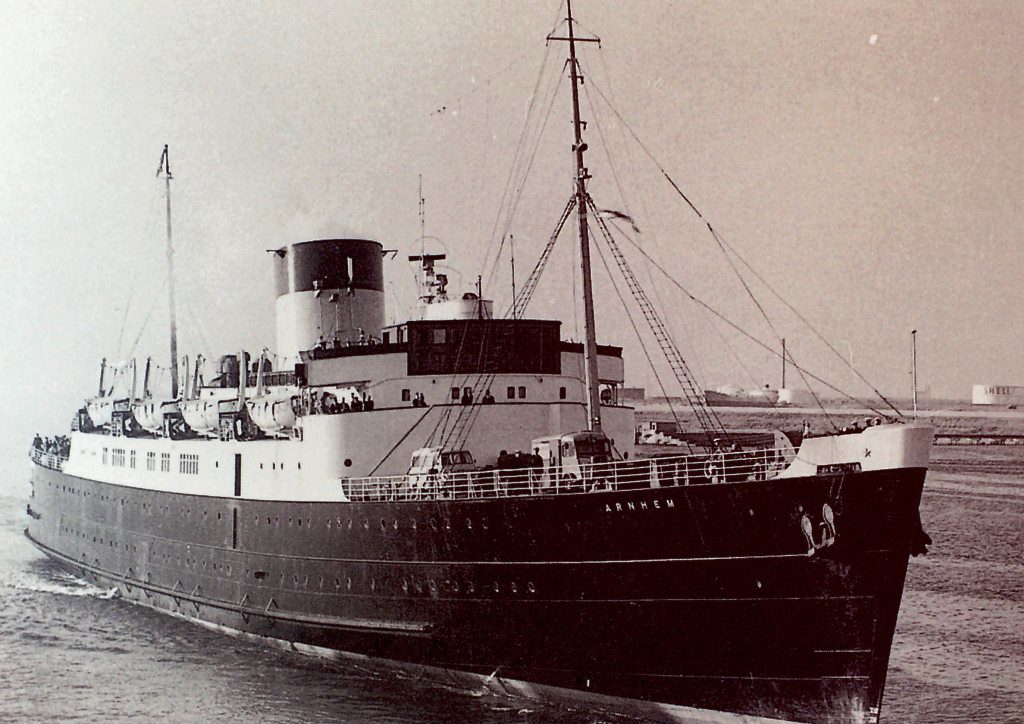
Arnhem
The design of the new ship was basically pre-war, although built with a single funnel and, in order to pick-up the cruise market once again, she was fitted out as a one-class steamer. During March, April and the first half of May 1954 she was converted to a 2-class vessel, her last call at the Hook of Holland was on the 27th of April 1968. Arnhem was scrapped at Inverkeithing in June 1969.
Bury
- Built. 1929 (IMO 1132093)
- Yard. Earle’s Shipbuilding, Hull
- Class of Ship. Passenger
- Operator. LNER
- Route. Harwich – Antwerp
- Passengers. 410
- Speed. 13 Knots
- Status. Scrapped 01/07/1958
SS Bury was used as a relief ship for Accrington & Dewsbury. She was at Hamburg when war started in August 1914 and by 1915 was requisitioned into the Imperial German Navy as an accommodation ship for naval pilots at Wilhelmshaven, being returned to the G.C.R. in January 1919, when she restarted the Rotterdam service, and from 1935 Hamburg again.
1947 saw her on the Hull – Rotterdam service opposite Melrose Abbey, receiving upgraded accommodation in 1956 but she was withdrawn in May 1958 after the arrival of the new Bolton Abbey and arrived at Nieuw Lekkerland for breaking on 1 July 1958.
Dewsbury
- Built. 1910 (IMO 1127859)
- Yard. Earle’s Shipbuilding
- Class of Ship. Passenger
- Operator. LNER
- Route. Harwich – Antwerp
- Length. 265 ft. Gross Tonnage. 1631
- Passengers. 410
- Speed. 13.5 Knots
- Status. Scrapped 1959
S.S. Dewsbury was built in 1910 for the Great Central Railway for service on the Grimsby–Hamburg route and was the first vessel in a series of five sister ships which were all built by Earle’s Shipbuilding at Hull. Dewsbury was launched by the general manager’s eldest daughter on the 14th April 1910. Dewsbury was acquired by LNER in 1923 and passed to Associated Humber Lines in 1935 and was converted to a Convoy Escort Vessel during the war.
She returned to service post-war in late 1945 on the Harwich – Antwerp route with sister vessel Accrington replacing tonnage lost during the hostilities by the Harwich fleet she passed to British Railways in 1948 she was finally withdrawn from service in January 1959 and was scrapped in May of that year.
Melrose Abbey
- Built. 1929 (IMO 5196830)
- Yard. Earle’s Shipbuilding
- Class of Ship.
- Operator. LNER
- Route. Harwich – Antwerp
- Length. 292 ft.
- Gross Tonnage. 1908
- Passengers. 112
- Speed. 14 Knots
- Status. Scrapped 1984
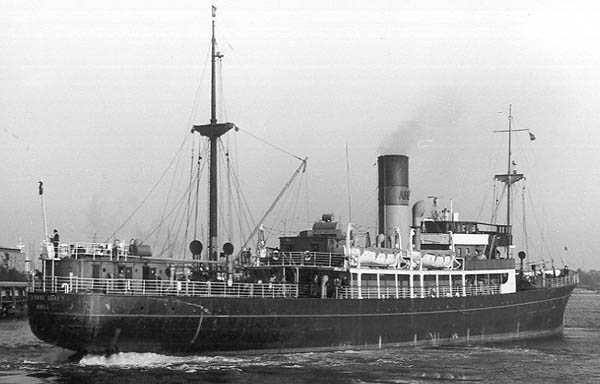
Melrose Abbey
SS Melrose Abbey was used as a relief ship for Accrington & Dewsbury. Following the fall of the Netherlands she operated in coastal convoys until conversion to a convoy rescue ship in 1941, but a grounding whilst on delivery voyage, including being struck by a mine whilst stranded, caused severe damage which, but for war scenario, would have been terminal.
Released in June 1945 and resumed her service from Hull in March 1946. Renamed Melrose Abbey II in 1958 in order to release her name for a new motor-ship, she was sold in 1959 to Greek owners as Kriti and served them until broken up around 1984.
Prague
- Built. 1929 (IMO 1161036)
- Yard. John Brown & Co. Ltd, Clydebank
- Class of Ship. Twin screw steamer
- Operator. LNER
- Route. Harwich – Hook of Holland 1929-1947
- Length. 350 ft.
- Gross Tonnage. 4225
- Passengers. 548
- Speed. 21 knots
- Status. Scrapped 14/09/1948
T.S.S. Prague’s maiden voyage was on 1st March, but five days later dense fog was already interfering with her schedules. On 1st of September 1939 the Prague went from Harwich to Hook of Holland afterwards the service was to be closed for six years.
In March 1944 she was converted at North Shields into ‘Hospital Carrier No.61’, and saw service from the western beach-heads and from Cherbourg and Dieppe between June 1944 and June 1945, when she was released back to the G.E.R. On 14th of November 1945 the Prague reopened the postwar civilian service from Harwich to the Hook of Holland which was then operated on a thrice-weekly basis. released for reconditioning back at Clydebank, she suffered an explosion and fire on 14 March 1948 and sank the next day.
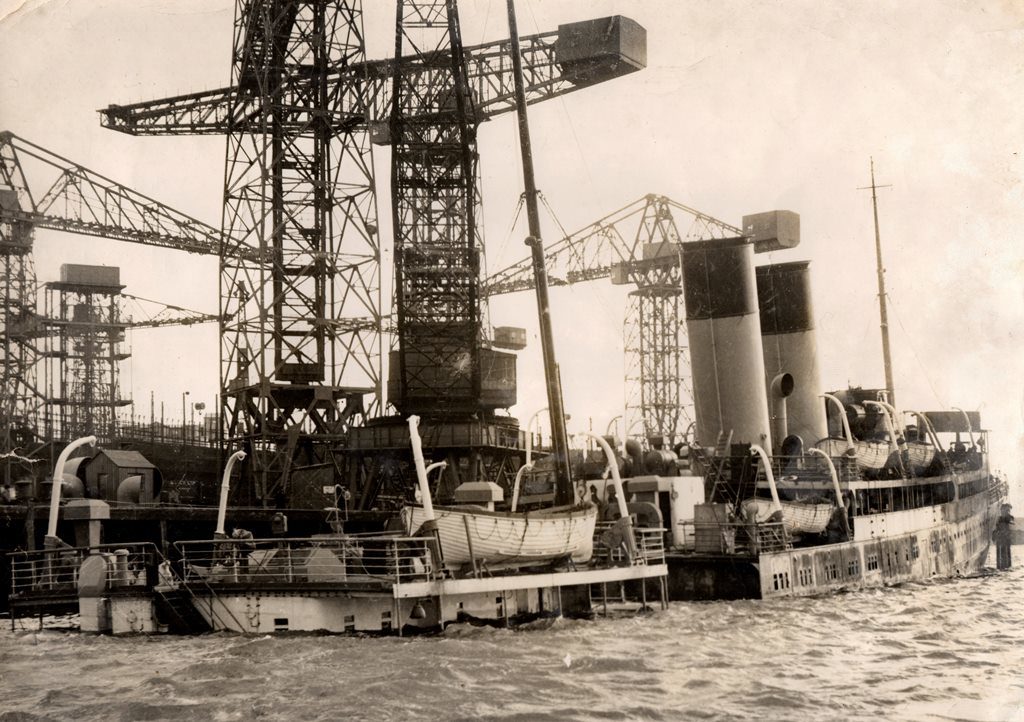
Prague
Prague was refloated on 6 May but judged to be beyond repair and arrived at Barrow-in-Furness for breaking on 14 September 1948.
Sheringham
- Built. 1926 (IMO 1145409)
- Yard. Earle’s Shipbuilding
- Class of Ship. Cargo
- Operator. LNER
- Route. Harwich – Rotterdam
- Length. 265 ft.
- Gross Tonnage. 1088
- Passengers. 0
- Speed. 14 Knots
- Status. Scrapped 1958
The LNER’s first ship for the Harwich station was the cargo Steamer Sheringham which took up the Rotterdam route in 1926. She was the last local vessel to be built by Earle’s of Hull and saw off the Frinton which passed to Greek Ownership the following year.
Stockport
- Built. 1910 (IMO 1132111)
- Yard. Earle’s Shipbuilding
- Class of Ship. Passenger
- Operator. LNER
- Route. Harwich – Rotterdam
- Length. 265 ft.
- Gross Tonnage. 1637
- Passengers. 410
- Speed. 13 Knots
- Status. Lost 1943
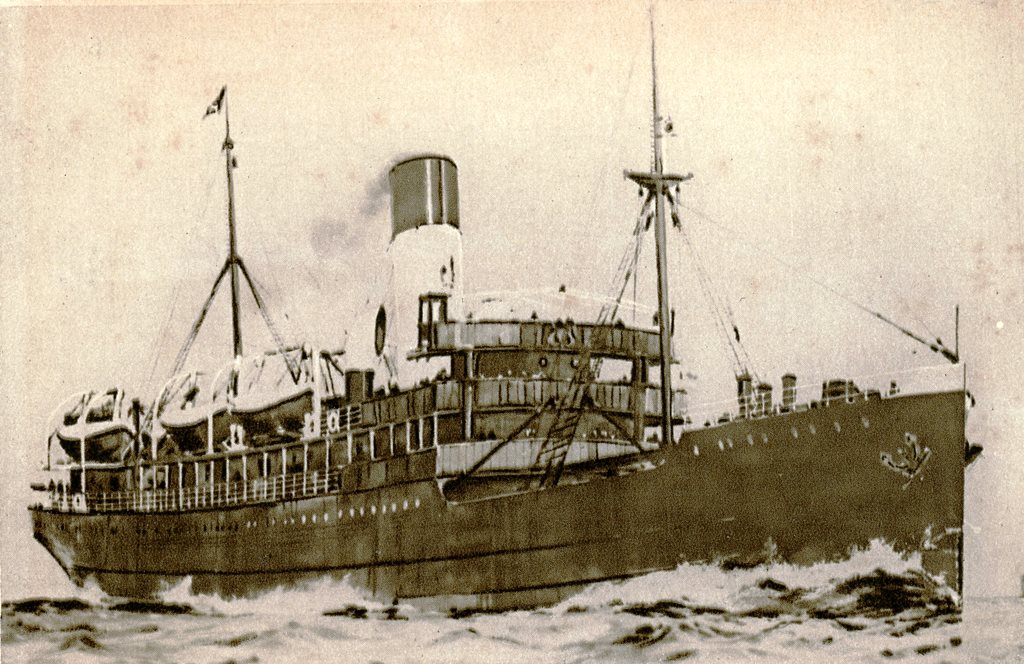
Stockport
S.S. Stockport was a sister of Accrington, which had been ordered to replace the Blackburn another sister which was lost within 3 months of delivery following a collision off Norfolk.
Remained on commercial service during 1914 – 1918 and then did repatriation work in 1919 working for the Great Eastern Railway to Harwich.
After being employed as a cable carrier for the Navy from July 1941, she was requisitioned as a Convoy Rescue Ship and refitted on the Mersey, making her first sailing in the December. Through 1942 and into 1943 she gave good service, escorting convoys on the Atlantic and rescued 413 sea and air crew, 256 of them within 34 hours in one convoy in November 1942.
On 21 February 1943 she was part of convoy ON 166 and went to the assistance of Empire Trader which had straggled behind the convoy in the Atlantic Ocean north of the Azores, Portugal. After U-92 torpedoed and damaged Empire Trader, Stockport rescued all 106 crew men before HMCS Dauphin scuttled Empire Trader following orders received from the Admiralty. However, Stockport had itself now fallen. She was attempting to regain the convoy when on 23 February U-604 torpedoed and sank her with the loss of all her crew and the survivors that she had rescued from other vessels.
Vienna (II)
- Built. 1929 (IMO 1161034)
- Yard. John Brown, Clydebank
- Class of Ship. Passenger
- Operator. LNER
- Route. Harwich – Hook of Holland
- Length. 350 ft.
- Gross Tonnage. 4218
- Passengers. 548
- Speed. 21 Knots
- Status. Scrapped 04/09/1960
T.S.S Vienna was largely employed on weekend summer cruises. Vienna was trooping between Southampton, Le Havre and Cherbourg between December 1939 and May 1940, and then took part in the evacuations from both French ports and later with 2346 servicemen from Brest to Plymouth in mid-June. In July she moved to Swansea for an intended conversion to a fleet oiler (fuel carrier), conversion began in December but was discontinued after April 1941.
Instead, she was converted to a Depot Ship to support motor torpedo boats and as such was commissioned as HMS Vienna in June 1942 and preceded to North Africa and in 1943 to the Sicily landings, later based at Bari and Brindisi to support operations in the Adriatic. Returned to the U.K. in October 1944 and decommissioned from the navy.
She reverted to trooping duties under the Ministry of Transport, Tilbury to Ostend before taking up her old route Harwich – Hoek van Holland. Although under LNER management, she remained under Government ownership and continued as a peacetime troopship until withdrawn and broken up at Ghent, arrived 4 September 1960.
Photo Gallery
Click “Play” to start the gallery slide show.
We are adding more information to this site on a regular basis, if you wish to submit any photos or provide any information, then please use the contact page at the bottom of the screen.
Copyright Ownership.
We attempted to get the consent of copyright holders to use this material for nearly all of the photographs on the website.
In the few cases where names are available, a thorough search was made using telephone directories, photographic copyright directories, People Search and Google Area Search. None of the copyright owners could be traced in this way and we believe we have exhausted all reasonable avenues.
The consensus opinion of these authorities was that if any two of the following situations applied we would be deemed to have taken sufficient action to avoid infringing copyright laws:
- Reasonable efforts made to contact the copyright holder
- No financial gain will be made in relation to the photos
- A letter is obtained from present owner of photos
- There is a proviso included stating that if offence is caused document will be removed
The website owner undertakes to remove any photograph from the website where offence is caused.
All the above conditions have therefore been met.
← Other Shipping Lines Höegh Ugland →